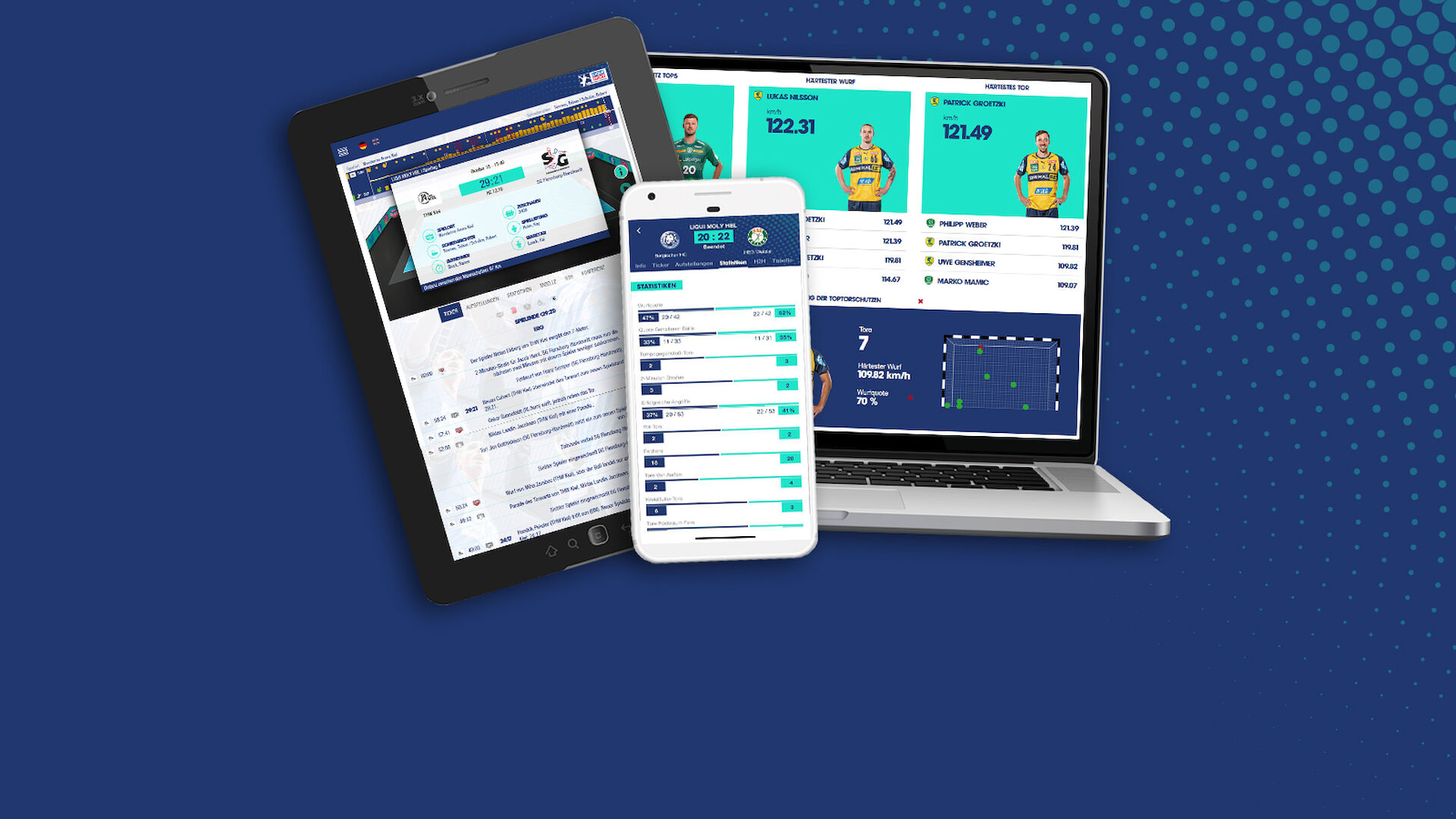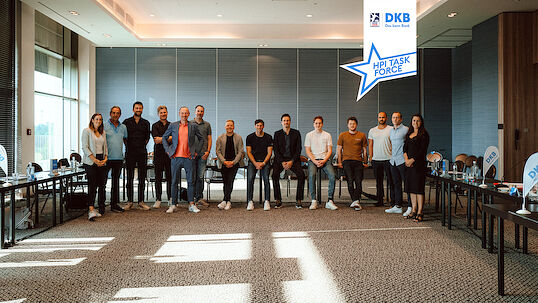
Goals, assists and saves: Live-Data of LIQUI MOLY HBL
Goals, assists, saves, missed shots - the list of all the statistics collected during each LIQUI MOLY HBL, 2. HBL and DHB-Pokal match is comprehensive and long. But how exactly is this data collected? And what actually happens to the statistics after the end of a match?
Which keeper had the best save percentage at the end of the season? How many goals did the leading player score? And who had fired the strongest shot during last season? All statistics and data of all the matches are available exclusively to fans on the official LIQUI MOLY HBL channels. Every matchday, thousands of interested people follow the action in the various arenas of the HBL-teams via the official liveticker.
When and how is the live data collected?
The fully digitized and real-time process of data collection is carried out and published during all matches of LIQUI MOLY HBL, 2. HBL and DHB-Pokal. In addition, performance data is also collected during the Pixum Super Cup and the All Star Game. The data is collected in two different ways:
1) All matches are accompanied by a two-man referee panel. This panel records the central match information (goals, scorers, penalties, match time) live and transfers this data into the "Electronic Match Report".
2) Independently of the refereeing panel, two additional scouts, who are specially trained by the LIQUI MOLY HBL in cooperation with its partner Sportradar, record more in-depth statistics (goals, assists, saves, turnovers, etc.) for each match. Using web-based software, this data is immediately available, for example, in the official liveticker of Handball-Bundesliga GmbH.
What happens to the data after the end of a match?
Immediately after the final whistle, the referee panels' data is automatically compared with the scouts' entries. During this "merging process" data may be overwritten and updated after the end of the match. All data overwritten in the "merging process" will be checked again manually after the matches are finished by LIQUI MOLY HBL. As a result, data within the liveticker or the website may also be changed retrospectively.
You can find a detailed overview of the LIQUI MOLY HBL season statistics here.
And how does the tracking data work?
Since the season 2019/20, the jerseys of all players have been equipped with a sensor that records all position and performance data in real time via geodata-tracking. Due to this feature it's possible to determine e.g. the running distance or speed of each player during a single match. Furthermore, additional ball data is tracked in all matches played with an offical ball from the famous brand SELECT. This makes it possible to visualize throwing patterns of individual players or to determine the speed of single shots. The tracking of these statistics takes place independently of the data collection process outlined above.
Via external feeds from tracking service provider Kinexon, this data is played out in real time to teams, media companies and fans. The individual match data with selected metrics are stored here.
How can the data be used to evaluate performance?
What role do match and tracking data play in evaluating player performance in the LIQUI MOLY HBL? How is the "DKB Player of the Month" actually determined using this data? And what is the Handball Performance Index all about?
At the beginning of season 2020/21, LIQUI MOLY HBL has launched the Handball Performance Index in cooperation with Deutsche Kreditbank AG and a renowned task force of sports and science. With the help of the wide range of different data and statistics collected during all LIQUI MOLY HBL matches, it will be possible to compare and evaluate sporting performance in a data-based and transparent manner. Players collect plus points for "positive actions" (e.g. goals, assists, saves, steals) during a match. Minus points are claimed for "negative actions" (e.g. missed shots, turnovers) and thus reduce a player's HPI. More information about the calculation and the origin of the Handball Performance Index can be found here.













































